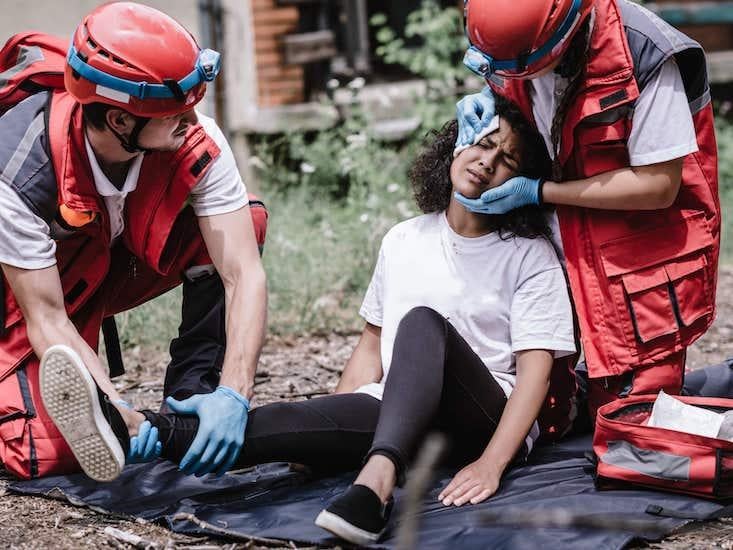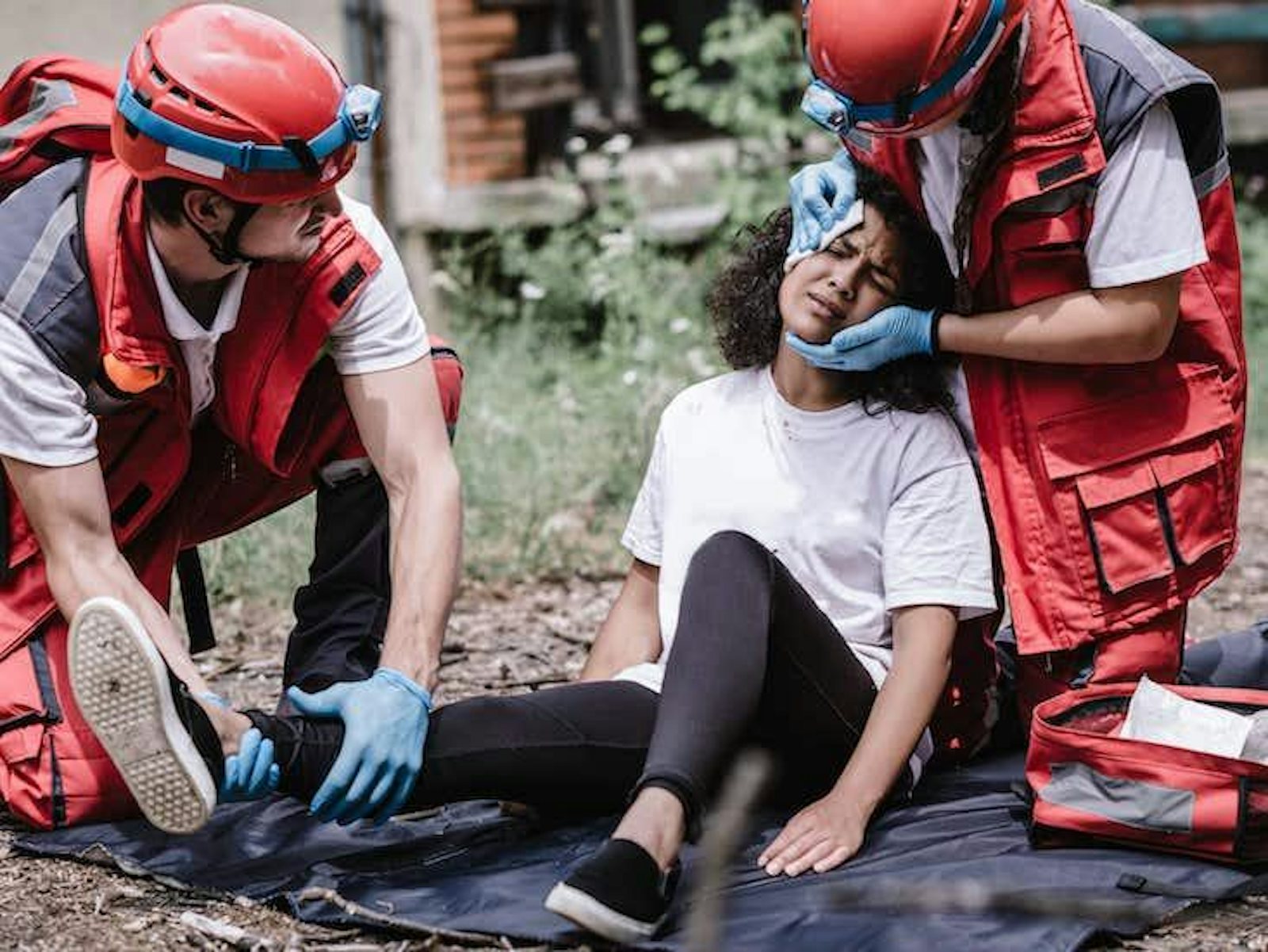
Parts of the world might have shut down, but nature never does. Even while people stay at home and learn about physical distancing, weather, tectonic shifts, meteorites, and solar storms do not pause. With many international borders closed and an increasing percentage of the population sick or rendered potential carriers of this latest coronavirus, what happens if some city or country needs an international operation for disaster aid?
Simultaneous environmental hazards are far from rare. The 1923 earthquake, which hit Tokyo and Yokohama, led to an inferno fanned (rather than extinguished) by a typhoon, with over 100,000 dead. One of the largest volcanic eruptions of the 20th century, Mount Pinatubo in the Philippines in 1991, coincided with the landfall of a major typhoon. In Afghanistan in both May 1998 and March 2002, earthquakes killing thousands rumbled through during severe weather which, in turn, hampered relief operations. Science, policy, and practice offer centuries of experience in disaster aid. Assistance from around Europe reached Portugal after the 1755 Lisbon earthquake and tsunami, and also Iceland following the 1783-1784 volcanic eruption of Laki. The modern humanitarian system perhaps came of age during Biafra’s attempt to secede from Nigeria, leading to war from 1967-1970. More recent incarnations of humanitarian aid include the world’s response to the 2004 Indian Ocean tsunamis and the earthquakes in Haiti in 2010 and Nepal in 2015.
Does post-catastrophe charity always begin at home without exception?
What did these crises have in common? The availability of personnel and goods and countries open to receive them. The current disaster-response industry is premised on the assumption that masses of relief workers can hop on planes at short notice and hit the ground running. Provided that donors comply (which is not always the case), anything the disaster-affected population needs can be brought in—search-and-rescue dogs and equipment, drinking water, food, tents, other shelter materials, hygiene products, and medical supplies.
Of course, precedents show that, even when available, disaster aid and relief workers are not necessarily welcome. Borders can be closed to international humanitarian assistance. In early May 2008, Cyclone Nargis roared through Burma, killing perhaps over 100,000 people. Burma’s government declined international aid, leading to discussions about whether or not other countries’ militaries should forcibly deliver relief supplies. The United Nations’ first plane landed about a week later, with Burma stating that it needed aid supplies, but not aid workers. Finally, nearly three weeks after the cyclone formed, an international relief operation was in full swing. Since 1995, North Korea has experienced a series of floods, droughts, famines, and epidemics as well as, in April 2004, a train explosion that might have killed thousands. The state permitted international aid to enter at times, especially from South Korea, but often reluctantly, occasionally linked to political concessions which were later revoked, and with no long-term impact on North Korea’s relations with the rest of the world.
What does this mean for international disaster aid with COVID-19 restricting travel and countries imposing isolation? If an earthquake now hits India or Iran, like in 2001 and 2003, respectively, killing over 20,000 people in each country—or if we witness a repeat of 2005’s Hurricane Katrina in the US or 2011’s tsunami in Japan—will the world respond? Would the world wish to respond?
Currently, health systems and social services are stretched to their breaking points. Doctors and nurses are dying. The United Kingdom is asking retired health care professionals to return to the frontlines. Other services need staffing on call as well. If we want our utilities to continue—water, sewage, gas, electricity, and the lifelines beyond isolation of the internet and cell phones—then we need professionals ready to step in when colleagues become sick or need to stay away from others. Even if these workers wished to join an international humanitarian operation, they would not be able to take a leave of absence due to needs at home. The dangers of letting them travel must also be considered. A 14-day isolation period is becoming standard for international arrivals to numerous countries. This is pointless if you are there to pull people from the rubble or to set up a mobile water treatment plan for thirsty disaster survivors. How do you choose whether to, on the one hand, save people from collapsed buildings or contaminated drinking water and, on the other hand, not risk (re)infecting a country with COVID-19?
Earlier this month, tornadoes slammed into Tennessee, killing two dozen people. Emergency managers began wondering what people with COVID-19 symptoms or otherwise in isolation should do when tornado warnings are issued. Tornado shelters are small, crowded, and poorly ventilated. Even the 10-40 minutes in a shelter are long enough to spread the coronavirus. Not entering the shelter risks lives from the storm. Nearly three weeks later, an earthquake shook Croatia, forcing a hospital to evacuate and sending crowds into open spaces, contravening coronavirus distancing guidance.
Grappling with these trade-offs is not a new problem. Some European countries are rabies-free whereas the disease remains prevalent in others. Allowing the free movement of rescue dogs around Europe revealed the introduction of some potentially unvaccinated animals from countries with rabies into countries without the disease. Should fewer rescue dogs be available in order to avoid spreading rabies? It is not just people and animals, but also goods. Imagine how the veterans of the Toilet Paper Wars of Sydney and Vancouver would feel seeing rolls being distributed in a far-off disaster-afflicted land. Those who rely on bottled water for daily medical needs might be incensed at seeing their country’s soldiers or non-profit organizations distributing it elsewhere when local stores have none.
Would international outrage emerge if the novel coronarvirus were used to mask a long-planned genocide?
Thus arises a major debate among disaster ethicists. Does post-catastrophe charity always begin at home without exception? Do our own ongoing disaster problems entirely preclude helping others? If generosity hurts us, is altruism wrong? Why are we even in a long-term situation where richer countries cannot handle their own disease disaster so that poorer countries must, as always, suffer even more?
We could plan and prepare for addressing multiple crises simultaneously. Instead, despite decades of pandemic planning and scenario development—as well as experience dating back to, among other events, the Spanish flu of 1918-1920—many governments and companies are reacting as if a pandemic has never before been seen. Even much of the knowledge gleaned from the world’s worst Ebola outbreak to date, 2014-2016 in West Africa, seems to have vanished in four short years. Should another major environmental hazard suddenly manifest somewhere in the world we would, apparently, be surprised.
Conversely, Singapore and Taiwan rapidly applied lessons learned from a coronavirus outbreak in 2003, Severe Acute Respiratory Syndrome (SARS). Whether or not Taiwan is ready for the next earthquake and Singapore for the next storm surge or Indonesian volcanic eruption has yet to be seen.
As with Biafra, people suffering need humanitarian relief for more than just environmental hazards. Armed conflicts continue today from the Philippines to Yemen. In 2003, with the world distracted by the new wars in Afghanistan and Iraq, genocide was unleashed in Darfur, Sudan. Today, the Rohingya, Yazidis, and Syrians have been bumped off the front pages and donor spreadsheets. Would international outrage emerge if the novel coronarvirus were used to mask a long-planned genocide?
All forms of disasters continue, irrespective of the current pandemic. We know that concurrent hazards can emerge and we know that preventing a disaster is always better than applying a cure, to help ourselves and to avoid having to coordinate and provide international disaster aid. Nowadays, prevention might be the only alternative, because a cure might not even be feasible for those suffering from disaster beyond COVID-19.
Ilan Kelman is Professor of Disasters and Health at University College London and the author of Disaster By Choice: How Our Actions Turn Natural Hazards into Catastrophes. Follow him on Twitter/Instagram @ILANKELMAN.


























